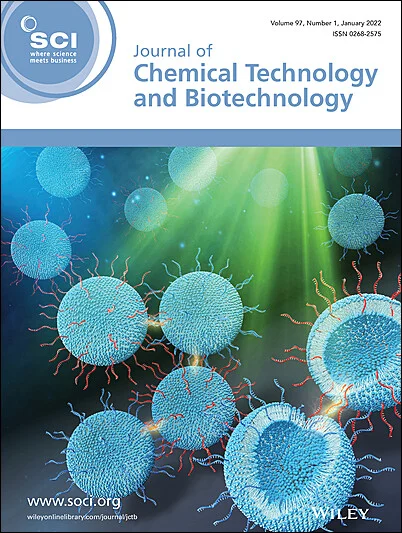Light–dark cycles improve the 3HV molar fraction in PHBV produced by photoheterotrophic bacteria from odd-chain fatty acids and cheese whey
Abstract
BACKGROUND
Poly(3-hydroxybutyrate-co-3-hydroxyvalerate) (PHBV) is the most promising biopolymer for replacing petroleum-derived plastics from polyhydroxyalkanoates (PHA) copolymers. The mechanical properties of PHBV improve as the content of the 3-hydroxyvalerate monomer (3HV) increases. However, there is no information about the effect of light/dark cycles on PHA composition produced by phototrophic purple bacteria. This work aimed to improve the molar fraction of 3HV in the PHBV copolymer formed by a mixed phototrophic culture enriched in Rhodopseudomonas palustris, combining the effect of the illumination regime and using odd-chain fatty acids and cheese whey as carbon sources.
RESULTS
Under continuous lighting, the PHBV concentration (mg L−1) and 3HV molar fraction (%) were 508 ± 25 mg L−1 (1%), 193 ± 10 mg L−1 (22%), 252 ± 10 mg L−1 (1%), and 286 ± 10 mg L−1 (3%) for valerate, propionate, lactate, and fermented cheese whey, respectively. Interestingly, under light/dark cycles, the 3HV molar fraction increased 23-fold when using valerate (light/dark cycle of 30 min), 12-fold with lactate, and 1.5-fold with fermented cheese whey. The PHBV content (% w/w) reached was 20–25%, 14–16%, 12–15%, and 8–12% for valerate, propionate, lactate, and fermented cheese whey, respectively.
CONCLUSION
Combining odd-chain fatty acids and light–dark cycles was an excellent strategy to improve the 3HV molar fraction in PHBV. This study shows for the first time that the 3HV molar fraction production is positively affected by light/dark cycles using odd-chain fatty acids. Using light/dark cycles brings a double benefit: improving the molar fraction of 3HV in the polymer and decreasing the illumination-associated cost. © 2024 Society of Chemical Industry (SCI).

 求助内容:
求助内容: 应助结果提醒方式:
应助结果提醒方式:


